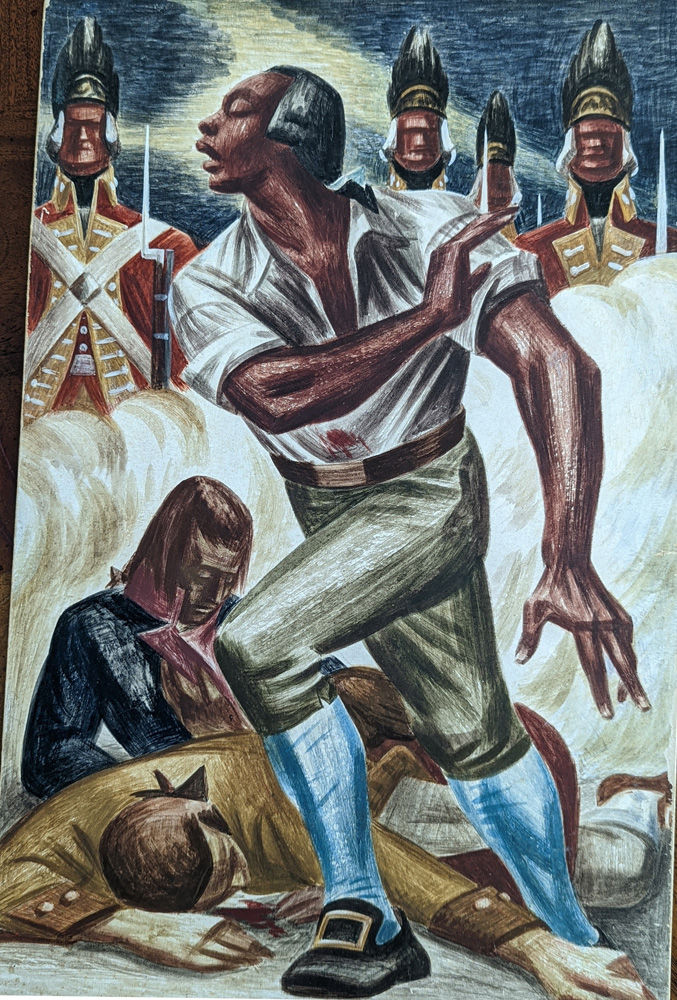Black History Month
- Lisa Lehman Trager
- Feb 2
- 3 min read
Updated: Feb 4
To commemorate Black History Month, it gives me pleasure to highlight some of Harold Lehman's work, demonstrating his enduring dedication to social justice. We celebrate the accomplishments, culture, and contributions of Black Americans and extend our thanks to all who have advocated for equality and justice in this nation. It is essential to continue striving to ensure that everyone in this country, regardless of race, ethnicity, religion, or gender identity, is treated with dignity and respect, free from discrimination.
Bloc of Painters

In 1932, Lehman answered the call from Mexican muralist David Alfaro Siqueiros to join a group he was forming called the Bloc of Painters. Their mission was to use mural painting to raise awareness about the political issues of their times. Working alongside Philip Guston, Reuben Kadish, Luis Arenal, and several other artists, the artists produced fourteen fresco panels focusing on two themes: 1) the severe mistreatment of African Americans in America and 2) the exploitation of labor by capital. At the time, the headlines were dominated by reports of the Alabama Scottsboro boys, who were arrested and convicted on fabricated rape charges, essentially a "legal lynching." That year also saw significant strikes by unions, farmworkers, and others advocating for fairer wages and improved working conditions.
The night before the Bloc of Painters was scheduled to showcase their murals at the John Reed Club, the Los Angeles Police, also known as the Red Squad, learned about a meeting of a Japanese social club planned for that evening. The squad arrived fully armed with the intent to disrupt the gathering of Japanese Communist sympathizers. Upon encountering the provocative murals, they destroyed every panel by shooting at them and striking them with their rifle butts, leaving nothing but rubble.
Man’s Daily Bread. WPA Mural created for Rikers Island Penitentiary
In Lehman’s Rikers Island Mural, created in 1937-38, he was ahead of his time in depicting integrated scenes of black and white men working together. He was also very sensitive to the perspective of the prisoners. As Lehman explains his choice of the theme for the mural, Man’s Daily Bread, he reflected, “The mural was in the mess hall of Rikers Island prison where eight to nine hundred prisoners ate three times a day. So, it seemed to me that a theme that had some connection with not only the handling of food, but the idea of earning one's bread by one's own sweat so to speak, would have some good constructive connection with that prison without being an obvious lecture.”

Mural Concepts for the WPA
In 1939, Lehman continued pitching the Section of Fine Arts ideas for murals. Included were two paintings depicting 1) Marian Anderson singing at the Lincon Memorial Concert and 2) Crispus Attucks, the first casualty of the American Revolutionary War, at the Boston Massacre in 1775, who also happened to be Black.

Lehman was an enthusiast of classical music. He extolled not only the beauty of Marian Anderson’s voice but also her bravery in performing at the invitation of First Lady Eleanor Roosevelt at the Lincoln Memorial after she was barred from singing in Washington D.C.’s Constitution Hall because she was Black.

Lehman's bold decision to depict Crispus Attucks, a Black man who was the first casualty of the American Revolutionary War, in a WPA mural demonstrates his commitment to emphasizing the significant contributions and many sacrifices that Black people have made for this nation, since the beginning.


